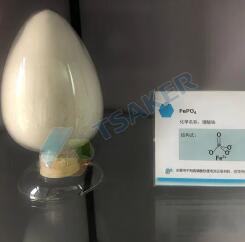As the demand for energy storage technologies continues to grow, researchers are exploring new materials that can improve the performance and reduce the cost of batteries. One promising material that has gained attention is iron phosphate, which has been shown to be a low-cost and eco-friendly alternative for battery materials.
Iron phosphate (FePO4) is a cathode material that has a unique crystal structure that allows for the storage and release of lithium ions during charging and discharging cycles. One of the key advantages of iron phosphate is its abundance and low cost compared to other cathode materials such as lithium cobalt oxide (LiCoO2) and nickel manganese cobalt oxide (NMC). The raw materials used to produce iron phosphate are widely available and can be obtained at a low cost, making it an attractive option for battery manufacturers.

Furthermore, iron phosphate is considered to be an eco-friendly material, as it is free from toxic metals and has a lower environmental impact compared to other cathode materials. This makes it a sustainable option for battery manufacturers looking to reduce the environmental impact of their products.
In addition to its cost and environmental benefits, iron phosphate also has a number of desirable properties that make it an attractive choice for high-performance batteries. For example, it has a high theoretical capacity, which means it can store a large amount of energy per unit weight. This makes it an attractive choice for high-energy density applications such as electric vehicles and grid storage systems.
Iron phosphate also has a long cycle life, meaning it can be charged and discharged repeatedly without significantly degrading its performance. This is important for applications that require long-lasting batteries, such as electric vehicles and grid storage systems.
One of the challenges with iron phosphate is its lower conductivity compared to other cathode materials. However, researchers have been exploring ways to address this limitation, such as by using nanoscale iron phosphate particles or combining iron phosphate with other materials like graphene. These approaches have shown promising results in improving the overall performance of iron phosphate-based batteries.
Iron phosphate has already found some commercial applications in low-power and low-energy density applications such as power tools and small electronic devices. However, there is still much research and development needed to fully realize the potential of iron phosphate in high-energy density batteries for electric vehicles and grid storage systems.
In conclusion, iron phosphate is a low-cost and eco-friendly alternative for battery materials that shows promise for improving the performance and sustainability of batteries. While there are still challenges to be addressed, ongoing research and development in this area suggest that iron phosphate-based batteries could play a significant role in the transition towards a more sustainable and reliable energy system.
Copyright:@2020-2021
Comments Please sign in or sign up to post.
0
0 of 500 characters used